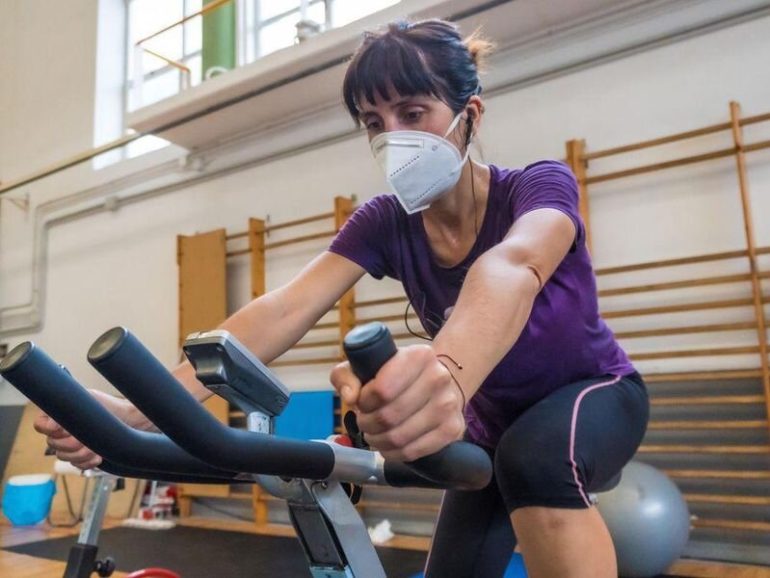Wearing a mask while you exercise may be uncomfortable, but a new study should reassure gym-goers that it poses no actual health risks.
“What we found was, that it is safe to run at peak exercise in both an N95 mask and a cloth face mask,” said researcher Dr. Matthew Kampert, of the Cleveland Clinic.
His team looked at 20 healthy people, average age 37, who ran on a treadmill to peak exhaustion while wearing an N95 mask, a cloth mask and no mask.
None of the participants had any safety issues while working out in either type of mask, and monitors showed no abnormal heart rhythms or unsafe drops in oxygen.
The main reason participants stopped running was due to mask discomfort, according to the study published online June 30 in JAMA Network Open.
Kampert noted that the study did not include people with chronic disease or heart or lung problems, and he recommended that people with underlying health conditions talk to their doctor about exercising with or without a mask.
People who are fully vaccinated against COVID-19 can exercise indoors without a mask, according to the U.S. Centers for Disease Control and Prevention.
“If they have not been vaccinated, they should continue to wear a mask for their own safety, but those who are vaccinated, they’re not required to wear a mask and it’s not recommended by the CDC at this point in time,” Kampert said in a clinic news release.
CDC changes mask rules for fully vaccinated people using public transportation
More information:
The World Health Organization explains when and how to use masks.
Copyright 2021 HealthDay. All rights reserved.
Citation:
Masks at the gym: Uncomfortable but not unsafe, study finds (2021, July 2)
retrieved 3 July 2021
from https://medicalxpress.com/news/2021-07-masks-gym-uncomfortable-unsafe.html
This document is subject to copyright. Apart from any fair dealing for the purpose of private study or research, no
part may be reproduced without the written permission. The content is provided for information purposes only.
